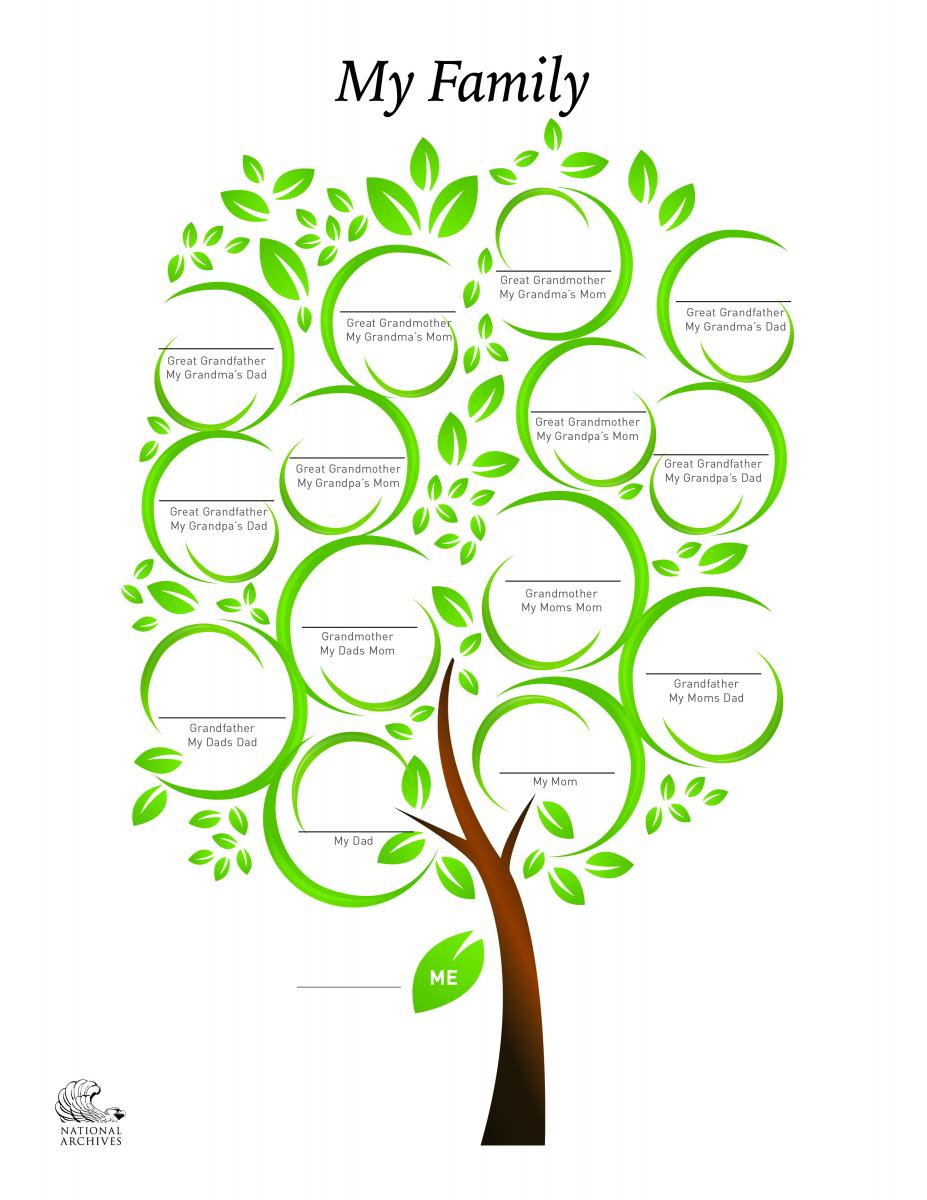
If you were to go into any public library today, one of the services you would most likely find in the database would be login information for ancestry.com. Interest in family history is no longer for aging people hoping to get back in touch with their roots. Genealogy can become an important part of any social studies curriculum. In fact, it can become an important project in your classroom. In this article, you will learn about how you can incorporate different genealogy projects in your classroom, research findings on the importance of genealogy in the classroom, and different resources you can use to get yourself started right away.
Genealogy projects can be a great way of getting parents and grandparents involved in the education of their children. According to Karen Bogenschneider and Carol Johnson of the University of Wisconsin-Madison, “a consistent body of research concludes that parents are the first and foremost influence on their children’s development and school success. When parents are involved, students get better grades and score higher on standardized tests” (2004). Genealogy projects encourage students to ask their parents/grandparents more about their heritage. It can become a bonding experience for students and their parents/grandparents as they dive deeper into their family history. More importantly, students will come back to you in order to tell you all about their families. Make sure you show enthusiasm and ask good questions. This shows your students that you care about their history which in turn will build a better relationship in the end. Students want to be acknowledged, and more importantly, they want to feel like they matter. Genealogy projects place an emphasis on your students, and your classroom will be better served by that.
State curriculums are beginning to place more emphasis on students and their cultures. In New York State, there is a shift occurring towards a more culturally responsive-sustaining education. “Culturally responsive education is about teaching the students in front of you. To do this requires that one work to get to know their students and develop meaningful relationships with students while engaging in the students’ communities. However, culturally responsive education must also be sustaining, that is it must work to encourage cultural pluralism and not cultural assimilation” (“What is Culture”, New York State Education Department, 2019). Genealogy projects are culturally responsive and fulfilling endeavors that are completed in the classroom. You will have a deeper understanding of your students, and they will more importantly have a greater understanding of themselves and their heritage. Many students will become excited to share the information they learned with their families. This in turn leads to deeper discussions and storytelling. This added information supplied by parents and grandparents will spur students to look further into their family history. There is a wealth of information online, and one of the best resources is the US Census.
As required by the Constitution, a census is conducted every ten years in order to gather specific information about the various people living in the United States. For example in the 1850 census, the value of real estate owned by each person was a question. By 1860, the US government became more interested in the birthplace of the people they surveyed. From 1860 until the 2000 Census, the U.S government was interested in the heritage of the people that lived here. This information was/is utilized by the federal government in the disbursement of federal funds. This valuable information is easily accessible via the federal archives. Merely type into a search engine what census year you would like, and click on the URL associated with the federal archives. However, you can easily access census data via Ancestry.com and familysearch.org.
Ancestry.com is a paid subscription service, but AncestryClassroom (https://www.ancestryclassroom.com/) is an educational platform that allows you access to more basic information ranging from census records to military records as well. Naturalization records are also easily accessed. You will be able to get enough information through this research tool to get a fairly deep understanding of one's ancestry. For deeper dives, you will have to go with a paid subscription. However, this free resource is great for any project you come up with to explore your student's ancestry. Work with your librarian to gain access to this wonderful research tool. More importantly, this resource protects student data.
Familysearch.org (https://www.familysearch.org/en/) is a free subscription resource that unfortunately doesn’t protect student data like AncestryClassroom. However, as the teacher, you can still use this resource to help students find out the information they are lacking or information that may help them narrow their research down. This website is run by the Church of Jesus Christ of Latter-day Saints. It is a really great resource if you don’t want to spend a ton of money on an ancestry subscription. Again be cautious using it with students as this website doesn’t protect student data.
Your librarian is your greatest resource in accessing various websites to help with genealogy projects. They will help you find newspaper databases that allow students to find articles about their ancestors, including but not limited to obituaries. They will help you set up your research projects, and more importantly help teach lessons about researching and citing information. They are your friend with this type of project.
When beginning a research project in regards to genealogy, start off small. Then from there, you can add to the project. Start off with census records. Typically students will be able to find out basic information about their grandparents who may show up on census records. Keep in mind that census data is sealed for 72 years (The “72 Year-Rule”, 2022), so it is possible that students may not have grandparents old enough for this project. Then you may have to find great-grandparents. The further down the line you have to go, the more difficult it will be to find information as most families may not know that information. This can be frustrating for students and teachers alike. Teachers may become overwhelmed trying to help students find their ancestors. Do not fear because you can easily have a Plan B with this project.
An easy Plan B for this type of project is to take a field trip to your local cemetery. Have students find a tombstone of someone that passed away before 1950. The information they will need is a name, a birth date, and a death date. This basic information will help them shift through vast amounts of information to find their person. Then from there, they can dive deeper into the person's ancestry. It is ideal that students are able to research their own heritage, but there may be a time when you have to do this, especially in certain circumstances where a student may not want to research their family due to traumatic circumstances. This is a possibility and Plan B is a great option with these possible circumstances.
There are a ton of great resources out there for you to implement a genealogy project in your classroom. The federal government has a ton of resources alone. Sites such as https://www.archives.gov/research/census and https://www.loc.gov/ (Library of Congress). Another great tool is https://www.findagrave.com/. This website allows you to look up gravestones across the country, which can be an excellent tool for students to narrow down their research. There are numerous resources out there, but make sure you personally vet these resources to ensure that student data is not compromised. Conducting genealogy research in your classroom is both rewarding for you and your students. In the process, you may find out you have some long-lost relatives as well (which could be bad or good).
Works Cited
Bogenschneider, K., & Johnson, C. (2004, February). Family involvement in education: How important is ... - purdue university. Retrieved July 1, 2022, from https://www.purdue.edu/hhs/hdfs/fii/wp-content/uploads/2 015/06/fia_brchapter_20c02.pdf
NYSED. (2019). What is culture? - New York State Education Department. Culturally Responsive-Sustaining Education. Retrieved July 1, 2022, from http://www.nysed.gov/common/nysed/files/programs/crs/what-is-culturally- responsive-sustaining-education.pdf
United States Census Bureau. (2022, January 26). The "72-year rule" . History. Retrieved July 1, 2022, from https://www.census.gov/history/www/genealogy/decennial census_records/the_72_year_rule_1.html
